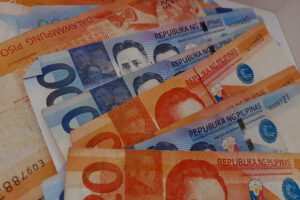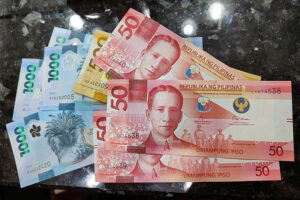THE PESO rebounded versus the dollar on Tuesday after US President Donald J. Trump suspended the implementation of tariffs on goods from Canada and Mexico.
The local unit closed at P58.34 against the greenback on Tuesday, strengthening by 32 centavos from its P58.66 finish on Monday, Bankers Association of the Philippines data showed.
The peso opened Tuesday’s trading session stronger at P58.45 against the dollar. It climbed to as high as P58.28, while its intraday low was at P58.555 versus the greenback.
Dollars traded ballooned to $2.13 billion on Tuesday from $1.27 billion on Monday.
The dollar was generally weaker early on Tuesday after Mr. Trump paused his planned import tariffs on Canada and Mexico, Rizal Commercial Banking Corp. Chief Economist Michael L. Ricafort said in a Viber message.
“The peso managed to recover after the US and Canada agreed to defer the implementation of tariffs by March and Mexico opening negotiations with President Trump,” a trader likewise said in an e-mail.
Meanwhile, a second trader said that client flows likely led to the huge trading volume on Tuesday.
For Wednesday, the first trader said the peso could move between P58.20 and P58.45 amid the release of January Philippine inflation data. The second trader expects the peso to range from P58.20 to P58.50 per dollar, while Mr. Ricafort said it could move from P58.25 to P58.45.
Currency markets had some of the wildest swings for years after the US paused planned tariffs on Canada and Mexico at the 11th hour, Reuters reported.
The dollar had reversed gains on Mexico’s peso and the Canadian dollar after the leaders of Canada and Mexico agreed to bolster border enforcement in calls with Mr. Trump, who had tied the tariffs to the flow of drugs and migrants and suspended them for a month in response.
However, the dollar strengthened in the Asian session on Tuesday after US tariffs on Chinese goods came into effect, triggering swift retaliation from Beijing and prompting a sell-off in the Chinese yuan and the Australian dollar.
The Canadian dollar and Mexican peso also weakened after rising the day before as those countries won a reprieve on their own US tariffs. The euro declined, with Washington threatening the European Union may be next in line for trade levies.
Mr. Trump’s administration imposed additional 10% tariffs on imports from China from 12:01 a.m. ET on Tuesday (0501 GMT).
The US dollar index — a measure of the value of the greenback relative to a weighted basket of six major foreign currencies — rose 0.15% to 108.6.
China on Tuesday placed tariffs on US imports, renewing a trade war between the world’s top two economies as Mr. Trump claimed China was not doing enough to halt the flow of illicit drugs into the United States.
The Chinese yuan edged down about 0.35% to 7.3207 per dollar in offshore trading, although that was well back from the record trough reached on Monday of 7.3631 yuan. There is no official yuan trading until Wednesday, with mainland markets still closed for the week-long Lunar New Year holidays. — A.M.C. Sy with Reuters






